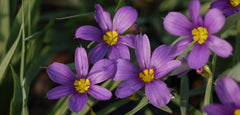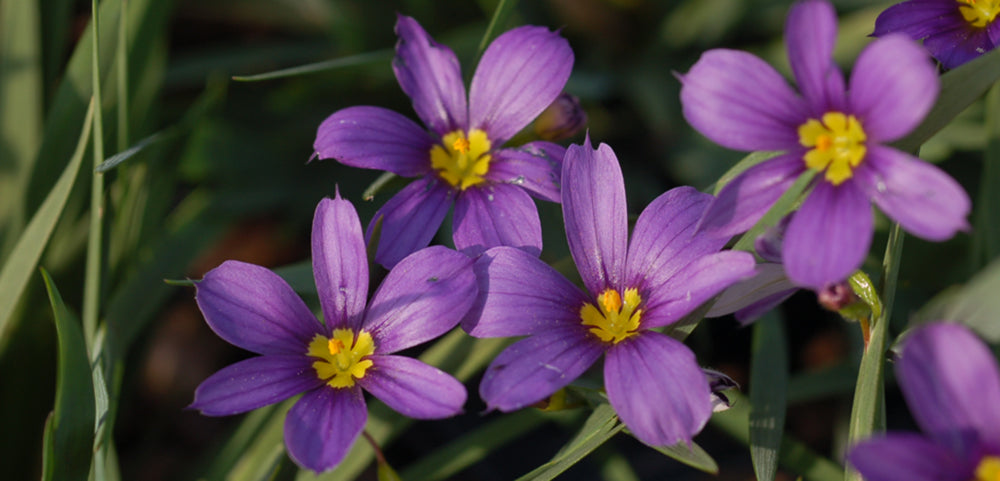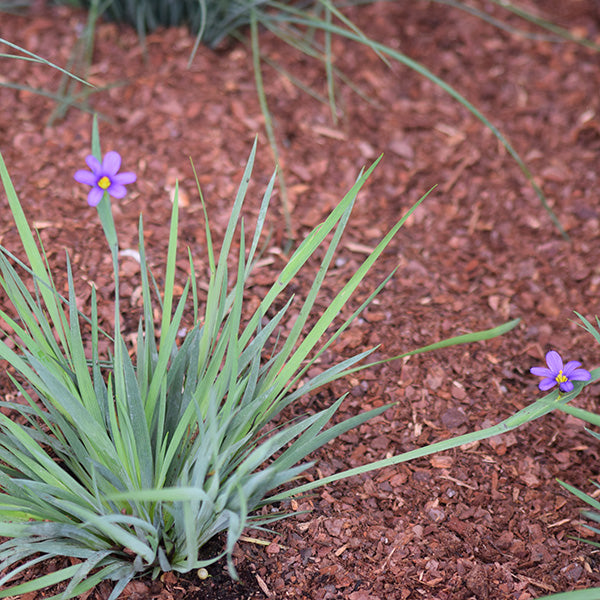Blue-Eyed Grass (Sisyrinchium angustifolium)
Blue-Eyed Grass Plant Features
Blue-eyed grass is an adorable spring-blooming perennial flower native to areas of Southeastern North America. It's both easy to grow and charming, making it a longtime favorite plant. It has earned its common name because the thin foliage looks like blades of grass. In late spring and early summer, those clusters of leaves are accented by clusters of blue, purple, or white flowers.A relatively small perennial, blue-eyed grass is wonderful in the front of the border or in container gardens where its foliage adds a fun, contrasting texture to other flowers.
Blue-Eyed Grass Questions?
Our perennial gardening experts are happy to help. Send usan email and we'll get back to you.
Blue-Eyed Grass Growing Instructions
Grow blue-eyed grass in full sun or part shade and moist, well-drained soil. It likes lots of organic matter in the soil, so add compost at planting time to help it thrive. Because blue-eyed grass doesn't like droughty conditions, spread a layer of mulch over the soil after planting to help keep the soil cool and moist into the summer.If you wish, you can cut back blue-eyed grass in autumn, after freezing temperatures have turned the foliage brown. You can also leave it over winter -- it's up to you.
Blue-eyed grass doesn't require regular fertilization to stay happy, especially if you grow it in a soil rich in organic matter.
-
Water
Medium water needs
-
Light
Outside: Part sun
Outside: Sun
-
Colors
Blue
White
-
Special Features
Attracts butterflies


